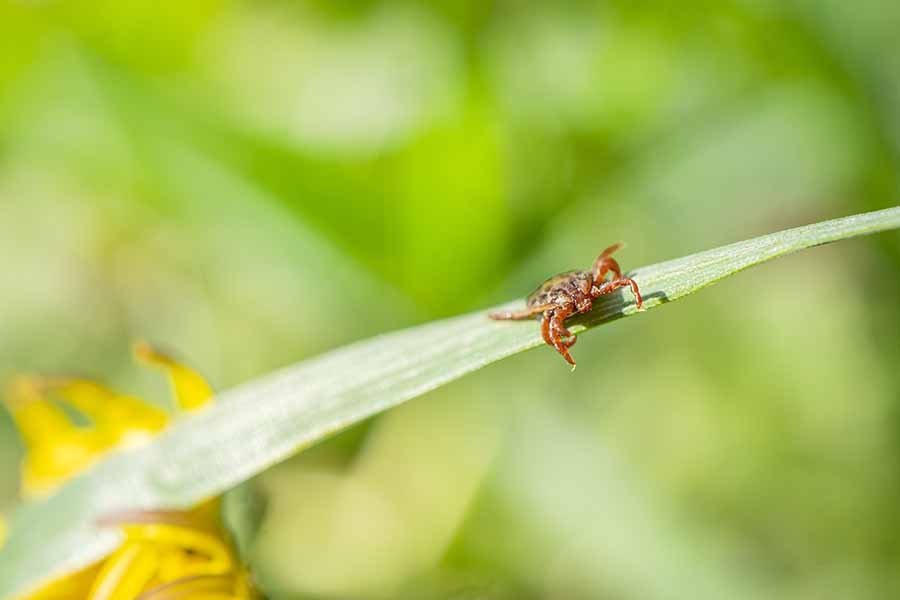
Miticides or acaricides are types of pesticides used to control or kill mites and ticks, which are arachnids and can cause damage to crops, livestock, and humans.
These chemicals can be used in agriculture, horticulture, and animal husbandry to prevent or treat infestations of mites and ticks, which can cause a range of problems such as reduced crop yield, decreased livestock productivity, and transmission of diseases. Miticides and acaricides work by interfering with the nervous system or other physiological processes of the target pests, leading to their death or reduced reproductive ability.
There are several types of miticides:
These pesticides are designed to control mites, which are small arachnids that damage crops, livestock, and plants.
These are synthetic chemicals that work by disrupting the nervous system of mites. Examples include malathion, chlorpyrifos, and diazinon.
Similar to organophosphates, carbamates also target the nervous system of mites. Carbaryl and propoxur are two examples of these chemicals.
Similar to chrysanthemum flowers, synthetic pyrethrin’s are pyrethroids. Mites are affected by pyrethroids. Examples include bifenthrin, cyfluthrin & permethrin.
These are natural compounds produced by soil-dwelling bacteria that are toxic to mites. Examples include abamectin and ivermectin.
These are naturally occurring compounds extracted from plants that can be used to control mites. Examples include neem oil, garlic oil, and cinnamon oil.
Used of Miticides
It is important to note that the use of miticides or acaricides can have unintended consequences, such as harming beneficial insects and affecting the environment. Therefore, their use should be carefully considered and managed.
Miticides can be used in the following ways:
- Identify the type of mite that you are dealing with. It may not be effective to use the wrong miticide or acaricide for different types of mites.
- Read the label of the miticide or acaricide that you plan to use. A label will include active ingredients, dosage recommendations, application instructions, and safety precautions.
- Choose the appropriate protective gear. This may include gloves, goggles, a respirator, or other items depending on the product and application method.
- Prepare the solution according to the label instructions. This may involve diluting the product with water, or mixing it with other substances to enhance its effectiveness.
- Miticides or acaricides should be applied. Spraying, dusting, or other methods can be used. Make sure you follow the label instructions carefully to ensure proper coverage and minimize any risks.
- In case of reinfestation or further damage, repeat the treatment. To prevent mites from returning, follow any recommended maintenance or sanitation practices.
- Remember to always use miticides or acaricides in a responsible and safe manner, and follow all label instructions and local regulations to protect yourself and the environment.
Here are some additional points to know about miticides:

- Miticides, also known as a caricides, are a type of pesticide used to control or kill mites and ticks. The pests can damage crops, trees, and other plants, as well as transmit diseases.
- Miticides interfere with mites' nervous system or respiratory function. Pesticides include organophosphates, carbamates, pyrethroids, and avermectins. In addition to controlling a wide range of mites and ticks, some miticides target specific pests only.
- Miticides and acaricides are both types of pesticides that are used to control or kill mites, which are small arthropods that belong to the same class as spiders and ticks. However, there are some differences between these two types of pesticides.
- Miticides are pesticides that are specifically designed to target and control mites. They work by interfering with the mites' physiology or nervous system, and can be applied to a variety of crops, including fruits, vegetables, and ornamental plants.
- Miticides are generally more selective than broad-spectrum pesticides, which means they only target the pests they are intended to control, and are less likely to harm beneficial insects or other non-target organisms.
- Acaricides, on the other hand, are pesticides that are designed to control a broader range of arthropods, including mites, ticks, and spiders. Acaricides are generally more broad-spectrum than miticides, and may have a greater potential to harm non-target organisms.
